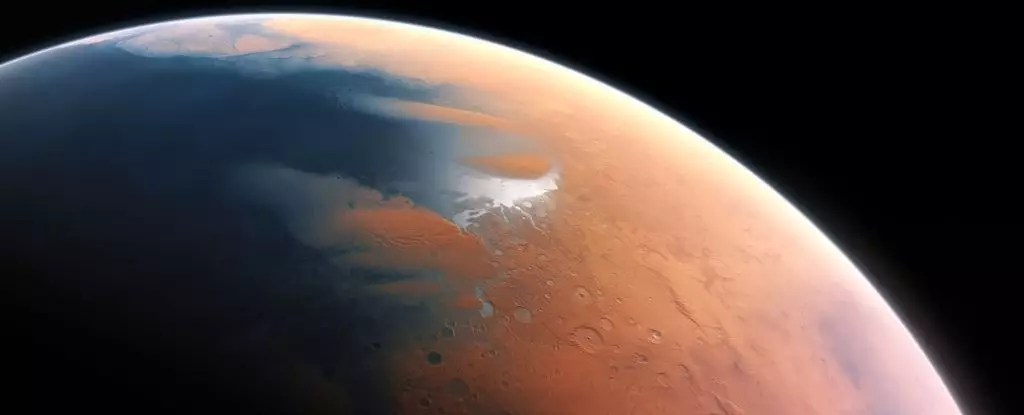Beneath the rust-hued surface of Mars lies a tantalizing mystery that beckons to scientists and enthusiasts alike—the possibility of vast reservoirs of liquid water concealed deep within the planet’s crust. For decades, Mars has been portrayed as a desolate wasteland; however, growing evidence suggests that it once hosted flowing rivers and expansive lakes, transforming our perception of the Red Planet. This paradigm shift emerges from our understanding of ancient Martian geology, as recent seismic data from NASA’s InSight mission opens a window into an era where liquid water sculpted its surface.
The geological history of Mars reveals that during the Noachian and Hesperian periods, spanning roughly 4.1 to 3 billion years ago, the planet was not the arid environment we see today. Instead, it was rich with liquid water, which shaped its valleys and provided a habitat for potential life forms. However, as the magnetic field waned and the atmosphere dwindled, much of this water evaporated, escaped into space, or became locked within polar ice caps and minerals. Yet, this does not explain the entirety of the planet’s “missing” water. Current calculations suggest that the water which has vanished could cover Mars with an ocean around 700 to 900 meters deep—an astonishing prospect that compels us to explore further.
The Role of Seismic Data
Utilizing seismic data captured from the InSight lander, scientists have reported remarkable findings about Mars’ underground structure. One notable discovery involves seismic waves that exhibit slower speeds within a layer situated between 5.4 and 8 kilometers beneath the surface. This anomaly indicates a “low-velocity layer,” likely composed of porous rock saturated with liquid water—akin to an aquifer on Earth. By examining how seismic waves interact with Martian geology, researchers have uncovered a landscape shaped not just by the passage of time but also by sub-surface layer dynamics.
The groundwork for this revelation was laid by the InSight mission, which aims to listen to the Martian interior through sophisticated seismic equipment. Events such as meteorite impacts and marsquakes have produced reverberations akin to drops of water creating ripples on a pond, allowing scientists to gather high-fidelity data about the planet’s layers. By analyzing these signals, researchers have begun to map the distribution of water-rich zones, leading to the conclusion that sizable volumes of liquid might still exist beneath Mars’ dusty exterior.
Potential for Ancient Life and Human Exploration
The discovery of liquid water reservoirs not only pivots our understanding of Mars’ geological past but also sparks exciting speculations about the potential for ancient life. If water could exist in a liquid state underground, it raises the question of whether microbial life forms may have persisted in these hidden aquifers. Earth’s own subsurface ecosystems thrive in groundwater, highlighting the need to consider similar life-sustaining environments could have existed on Mars.
Moreover, these water-rich zones hold promise for future human endeavors on the planet. As astronauts aim to explore and possibly inhabit this extraterrestrial landscape, identifying sources of clean water becomes a priority. Liquid water could be a critical resource for drinking, producing oxygen, and even fueling spacecraft for deeper cosmic exploration. Yet, drilling technology capable of reaching such depths on Mars poses significant challenges, necessitating innovative approaches to accessing these vital sources.
Future Missions and Ethical Considerations
The implications of this discovery are profound, yet they also underscore the need for ethical responsibility in our exploration of Mars. As we prepare for future missions, which may include rovers or drillers to tap into these subterranean reservoirs, it is essential to protect potential Martian biomes from terrestrial contamination. The ghostly echoes of the planet’s seismic heartbeat compel us to treat Mars as a world that may still harbor its own forms of life.
Current data from InSight represents only a partial view of Mars, and it is clear that further missions equipped with seismic technology are vital for mapping the entirety of Mars’ hidden water systems. Excitingly, the existence of water-rich zones such as those hinted at in Utopia Planitia reinforces the notion that there are still uncharted territories to explore.
As our interest in Mars grows, so too does our responsibility to consider the broader implications of our findings. While the prospect of discovering life or using local resources is tantalizing, the journey of understanding this distant world must be conducted with care and respect. It invites us to make responsible decisions as we continue to unlock the secrets of a planet that might be more akin to Earth than we previously imagined.

